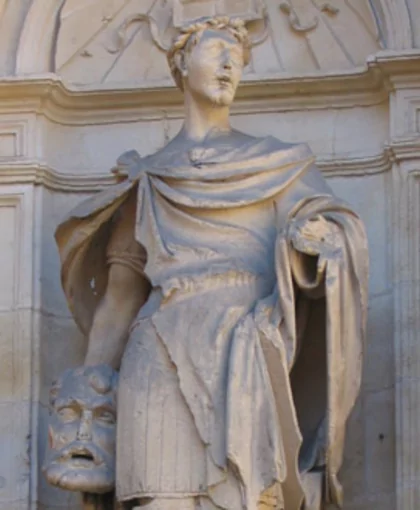Résumé
Principale ville de basse Normandie, Caen a connu à la Renaissance une intense activité sur le plan architectural. Pourtant, après avoir bénéficié au XIXe siècle du travail d’importantes sociétés savantes, elle est restée en marge du mouvement qui a vu, dans ces dernières années, un intérêt renouvelé pour les études urbaines : de grands monuments attendent encore leur première étude, souvent compliquée, il est vrai, par les destructions considérables causées par les bombardements de 1944.
Portant aussi bien sur l’architecture religieuse, civile que militaire, cette thèse propose une étude de la création architecturale à Caen entre la fin du XVe siècle et le début du XVIIe, organisée autour de trois axes de réflexion. Le recensement des chantiers, attestés par les sources, l’analyse archéologique ou les travaux d’érudits, permet de mettre en évidence les phases de construction et celles de moindre activité, et donc de préciser l’histoire de la ville et son influence sur les constructions. Pour appréhender les conditions matérielles de la création architecturale, sont ensuite étudiés les rôles et statuts des maîtres d’ouvrage, maîtres d’œuvre et ouvriers, ainsi que la provenance, les usages et les conditions de mise en œuvre des matériaux. L’analyse des œuvres est enfin développée sur deux plans, typologique et stylistique, et, tout en soulignant leur caractère original, replace les réalisations caennaises au sein des réseaux d’échange entre les provinces, les villes et leurs environs.
Cette synthèse est complétée par un catalogue présentant, sous la forme de notices et de fiches moins développées, les édifices construits à Caen entre le règne de Charles VIII et le début de celui de Louis XIII.
Architecture in Caen from the reign of Charles VIII to the beginning of the reign of Louis XIII
The main town of Lower Normandy, Caen, developed an intense architectural activity during the Renaissance period. However, after having benefited from the work of important learned societies in the 19th century, the city has remained on the sidelines of the renewed interest in urban studies of recent years. Some great monuments have not yet been considered, their study being, admittedly, often complicated by the extensive destructions caused by 1944 bombing.
Examining religious, civil and military architecture, this thesis proposes a study of the architectural creation in Caen from the late 15th century to the early 17th century and discusses three key factors. The inventory of the works known through the archival records, the archaeological analysis or the scholarly publications highlights phases of high or low activity, and therefore makes clear the history of the town and its influence on constructions. To understand the material conditions of architectural creation, the role and status of owners, architects and workers, together with the origin, custom and conditions of implementation of the materials must be considered. The analysis of the buildings is separated into two parts : it focuses on the typological and stylistic aspects of the works. In this way, it highlights their original character and assesses their implication in exchange networks between the provinces, towns and neighborhoods.
This synthesis is completed by a collection of files and of smaller records dedicated to the buildings erected in Caen from the reign of Charles VIII to the beginning of the reign of Louis XIII.
Jury
- M. Alexandre Gady (Paris-Sorbonne)
- M. Étienne Hamon (Picardie)
- M. Pascal Julien (Toulouse 2)
- M. Pascal Liévaux (Culture, DGP)
- M. Claude Mignot (Paris-Sorbonne)

